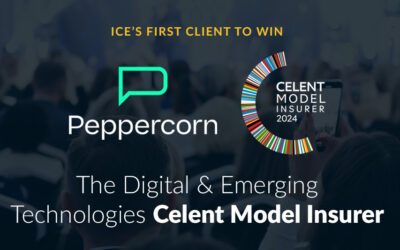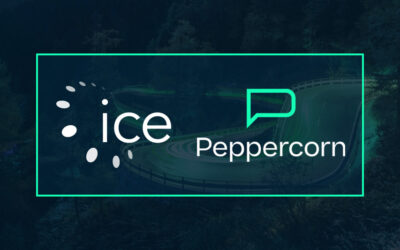Lynette Slater, Client Services Director at ICE InsureTech, details ICE’s proven steps to success for smooth insurance software implementations that deliver ROI.
It is an age-old view in the industry that insurance software implementations are costly projects that come in over budget, become heavily delayed and fail to meet business objectives. With many waiting months, if not years, to see value and measurable ROI.
At ICE InsureTech, we pride ourselves in our 100% success rate in delivery and implementation. Our robust approach, and proven methodologies challenges industry assumptions in the replacement of legacy software. We execute smooth delivery and transitions that empower our clients to achieve digital transformation and drive innovation.
So, how do we accomplish this?
We are confident in our delivery working in partnership with our clients to address their business challenges to deliver digital engagement and business transformation. Whether that’s accelerating their speed to market, incorporating a multi-channel portal strategy, introducing automation or integrating into our ICE Ecosystem.
Our experienced project teams work with our clients collaboratively, with honesty and complete transparency to maintain our track record in successful implementations.
So, how do we achieve this? To maximise success, we follow our proven and robust approach for end-to-end implementations that meet client objectives, projected costs and agreed timelines.
Want to find out more? Our top tips can be followed as guidelines as a key to successful insurance software implementations.
- Plan for success
One of the most important parts to any implementation is planning and preparing for discovery at the start of the project. Both teams must identify the core requirements that the implementation needs to achieve to maximise results and meet the client’s business goals.
Both teams need to evaluate where and how processes can be enhanced to transform operations and where manual processes can be removed that are preventing the client from meeting business targets.
What do you consider in the planning stages?
- A Fast Start – You need to consider inputs to the discovery workshop to facilitate understanding, planning and a fast start
- Avoid Old Traps – At the start of the project, both project teams need to adopt and not adapt to avoid the re-creation of legacy processes
- The Right Resources – The client project team needs empowered resources to enable staff to make and action quick decisions to reduce timeline delays
– Engagement of senior stakeholders from both parties to quickly deal with issues and escalations
- Be Clear – You need to prepare a clear implementation and cutover strategy
- Focus on Goals – Create a date and scope driven objective to ensure you focus on the targets and key goals set by the client
- Follow a successful project implementation approach
It is essential to the success of the implementation to have a structured project approach. Flexibility is important, but having disciplined structure is critical to have a stable and consistent project.
We split this into four key areas: Discovery and Initiation, Build and Test, UAT and Implementation.
Discovery & Initiation. This is where you validate the scope and approach to the implementation project. This phase includes:
- Project Kick-Off
- Project planning & governance, functional/technical workshops and strategy definition
- Interactive workshops resourced with subject matter experts from both parties
- Follow on activities include planning, joint configuration sessions, or high level design and strategy definition
The Build and Test. This phase includes:
- Sprint 0 – Sprint 0, detailed analysis, working from a prioritised backlog & establish the sprint plan, pre-build analysis phase
- Client UAT environment established, containing discovery configuration
- Sprint plans developed – typically 2 week sprints
- Each sprint delivered into UAT for early visibility with a show and tell for each sprint
- BA’s work with Technical Leads on detailed design, plus support client on configuration
- Client led configuration runs in parallel to build
- UAT planning and preparation
UAT. This phase is client owned:
- Typically carried out by combination of project team and operational users
- Runs alongside Business readiness activities
Implementation. The implementation follows:
- Joint implementation plan produced including all cutover activities
- Process & timings tested via pre-production installation
- Implementation to production & business cutover
- Post implementation review (internal) and joint retrospective
- Regularly review progress
Throughout the implementation, measures need to be in place to continually address progress and ensure the implementation’s timeline is intact.
Weekly project management updates will identify any roadblocks that could disrupt the implementation, or challenges that could push back timelines. Having regular reviews enables the teams to address these issues and outline next actions to maintain project momentum.
Regular project management updates also help the project team to review progress against the project plan. This allows both teams to evaluate ongoing success and focus on the targets set in the initial discovery period.
Additionally, having a steering committee is vital. Fortnightly steering groups empower the team to address key issues and steer the programme’s direction. The committee maintains budget reviews and quickly escalate any issues that could delay the implementation.
Finding the right implementation approach is key to deliver digital transformation and drive innovation.
Our steps to success will support any project to meet client requirements, whilst challenging industry views that insurance software replacements lead to increased costs and delayed timelines.
At ICE InsureTech, we follow our proven methodologies, including:
- Agile Sprinted Delivery within defined project parameters
- BAU handling, upgrades, projects and changes
- End-to-end implementations
- Industry standard tooling
- Manual/automated testing methodologies
- Proven Migrations
This enables our project teams to maintain our 100% implementation success rate and deliver measurable ROI for clients, many who have gone on to implement additional ICE Products with us.
Want to find out more about ICE InsureTech and our delivery approach? Contact ICE InsureTech here or visit our clients page and read about our implementation experience.
More articles
Peppercorn insurance wins first Celent Model Insurer Award with ICE
Peppercorn insurance is ICE’s first client to win the Celent Model Insurer Award for Digital and Emerging Technology. Their well-deserved success has set a new industry standard on how AI can support digital transformation in insurance.
PeppercornAI & ICE InsureTech Announce Partnership
Insurtech PeppercornAI announced their first strategic partnership with ICE InsureTech that will support rapid digital transformation in the insurance industry.
Kindertons launches its big ICE roll-out at the same time as going live on Acturis
Kindertons transforms operations with new launches powered by Acturis & ICE InsureTech, both integral companies in the Acturis Group.




